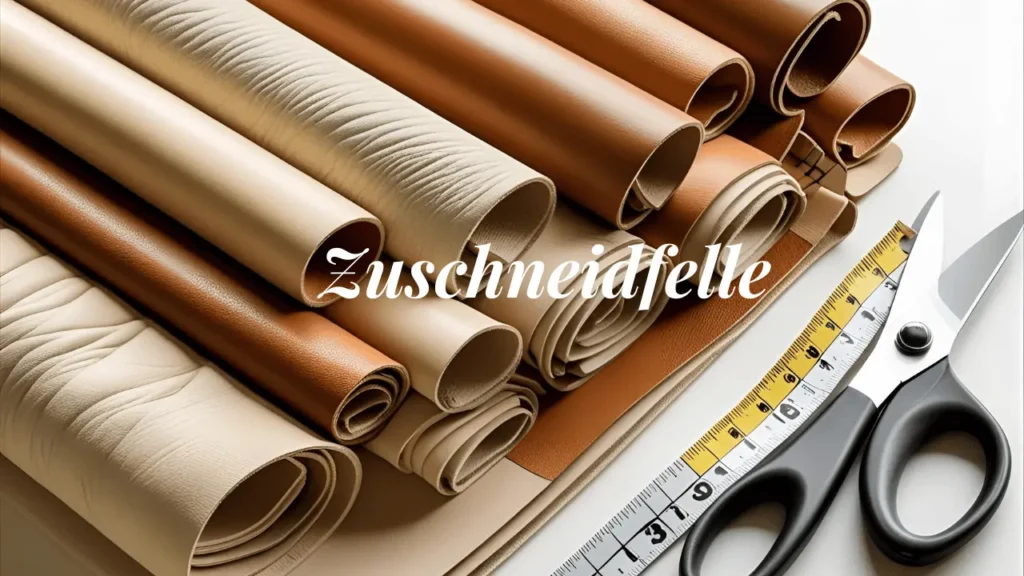The term Zuschneidfelle carries a special importance in traditional craftsmanship and modern industries. It refers to hides or skins that are carefully processed and prepared for cutting, making them essential materials for leatherwork, fashion, upholstery, and more. Over time, Zuschneidfelle has become a trusted choice for artisans and manufacturers who value both durability and aesthetic appeal. In this article, we will explore what Zuschneidfelle are, how they are processed, their practical uses, and why they remain relevant in today’s world.
What Are Zuschneidfelle?
Zuschneidfelle are animal hides that have undergone cleaning, tanning, and conditioning so they are ready to be cut into usable shapes. Unlike raw hides, these are flattened, smoothed, and carefully treated to ensure consistency in thickness and texture. Craftsmen prefer Zuschneidfelle because they save time in preparation and offer reliable quality for a wide variety of applications.
The Processing of Zuschneidfelle
The production of Zuschneidfelle involves multiple stages, each one aimed at enhancing durability and flexibility:
- Cleaning and curing – hides are cleaned of residues and preserved.
- Hair removal – liming or other processes are used to remove hair.
- Splitting – hides are adjusted for consistent thickness.
- Tanning – vegetable or chrome tanning stabilizes the hide and prevents decay.
- Conditioning – oils and treatments make the hides soft and workable.
By the end of this process, Zuschneidfelle become easy to cut and suitable for detailed craftwork.
Types of Zuschneidfelle
Different animals provide unique qualities to Zuschneidfelle:
- Cow and calf – strong and durable, often used in furniture and heavy-duty products.
- Sheep and lamb – soft, lightweight, and excellent for clothing.
- Goat and kid – flexible and resistant, ideal for gloves or accessories.
- Exotic hides – including deer or pigskin, often used in luxury and specialized products.
The choice of Zuschneidfelle depends on the intended application, as each hide has its own balance of strength, softness, and texture.
Why Zuschneidfelle Matter in Craftsmanship
For artisans, Zuschneidfelle offer a reliable foundation. Their consistent quality means that patterns can be cut more accurately, leading to professional results. Tailors, shoemakers, and upholsterers value them because they reduce errors and enhance efficiency. In addition, these hides provide a natural aesthetic that synthetic materials cannot fully replicate.
Applications of Zuschneidfelle
The versatility of Zuschneidfelle makes them highly valued across many fields:
- Fashion – jackets, coats, belts, and handbags.
- Footwear – shoes and boots that require both comfort and durability.
- Upholstery – furniture and car interiors with long-lasting finishes.
- Bookbinding – decorative and strong covers.
- Craftwork – wallets, gloves, and accessories with fine detailing.
Because Zuschneidfelle combine both beauty and strength, they remain popular despite the rise of synthetic alternatives.
Sustainability and Ethical Sourcing
Modern industries recognize the importance of ethical practices. Zuschneidfelle are often by-products of the food industry, ensuring that materials are not wasted. Many tanneries are now adopting vegetable tanning and eco-friendly processes to reduce their environmental impact. This focus on sustainability ensures that the tradition of Zuschneidfelle can continue while respecting modern values.
How to Choose Quality Zuschneidfelle
When selecting Zuschneidfelle, several factors influence the final result of your project:
- Grain quality – smoother grains create a more elegant finish.
- Thickness – consistency ensures easier cutting and uniform products.
- Flexibility – pliable hides are easier to shape into patterns.
- Minimal imperfections – fewer scars or marks improve appearance.
Careful selection guarantees long-lasting and professional-quality results.
Conclusion
Zuschneidfelle represent a unique balance of tradition, practicality, and artistry. From fashion to furniture, these prepared hides play an important role in countless industries. Their careful processing, wide range of applications, and sustainable sourcing make them an enduring material for both craftsmen and manufacturers. As industries evolve, Zuschneidfelle will continue to hold their place as a timeless and valuable resource.
FAQs
What are Zuschneidfelle used for?
They are mainly used in fashion, footwear, upholstery, and craft industries for making durable and stylish products.
How are Zuschneidfelle processed?
They undergo cleaning, tanning, and conditioning to prepare them for cutting and crafting.
Which animal hides are common for Zuschneidfelle?
Cow, calf, sheep, lamb, and goat are the most commonly used sources.
Are Zuschneidfelle sustainable?
Yes, they are often sourced as by-products of the food industry and processed with eco-friendly tanning methods.
How can I identify quality Zuschneidfelle?
Look for consistent thickness, smooth grains, flexibility, and minimal surface imperfections.
